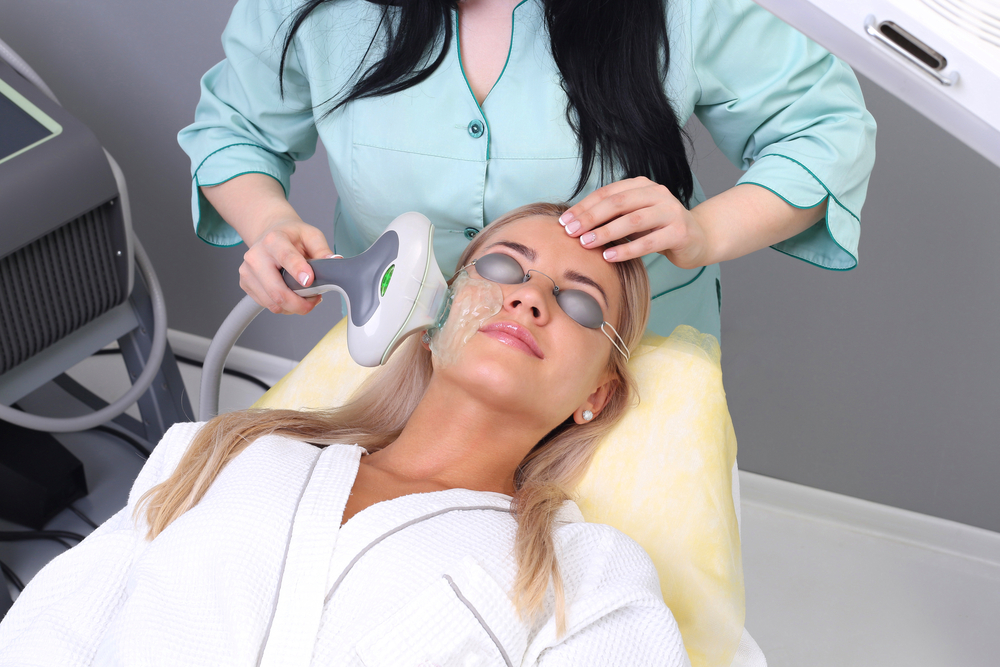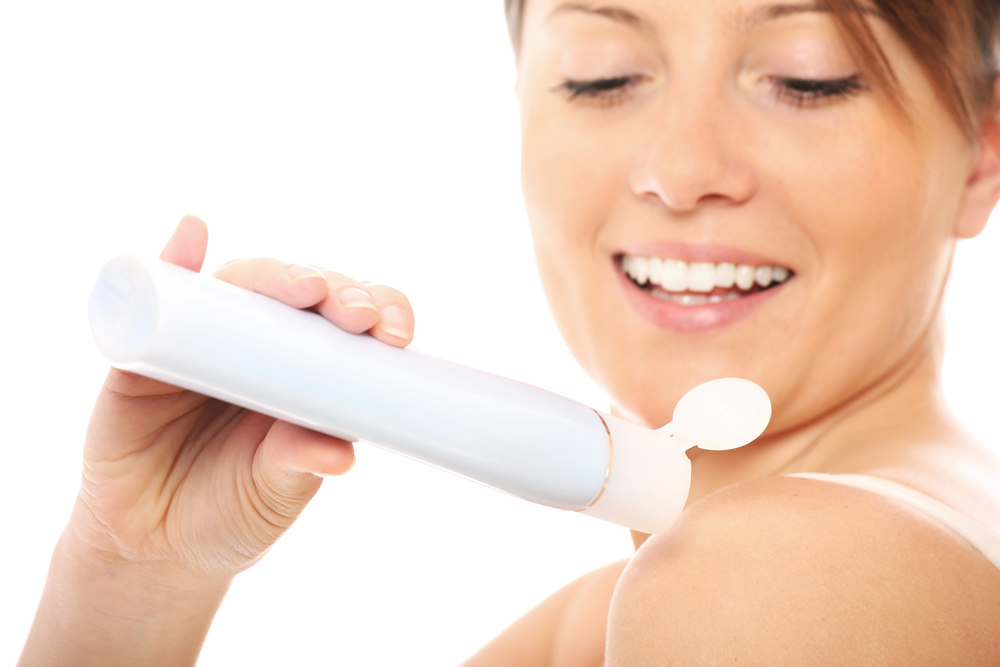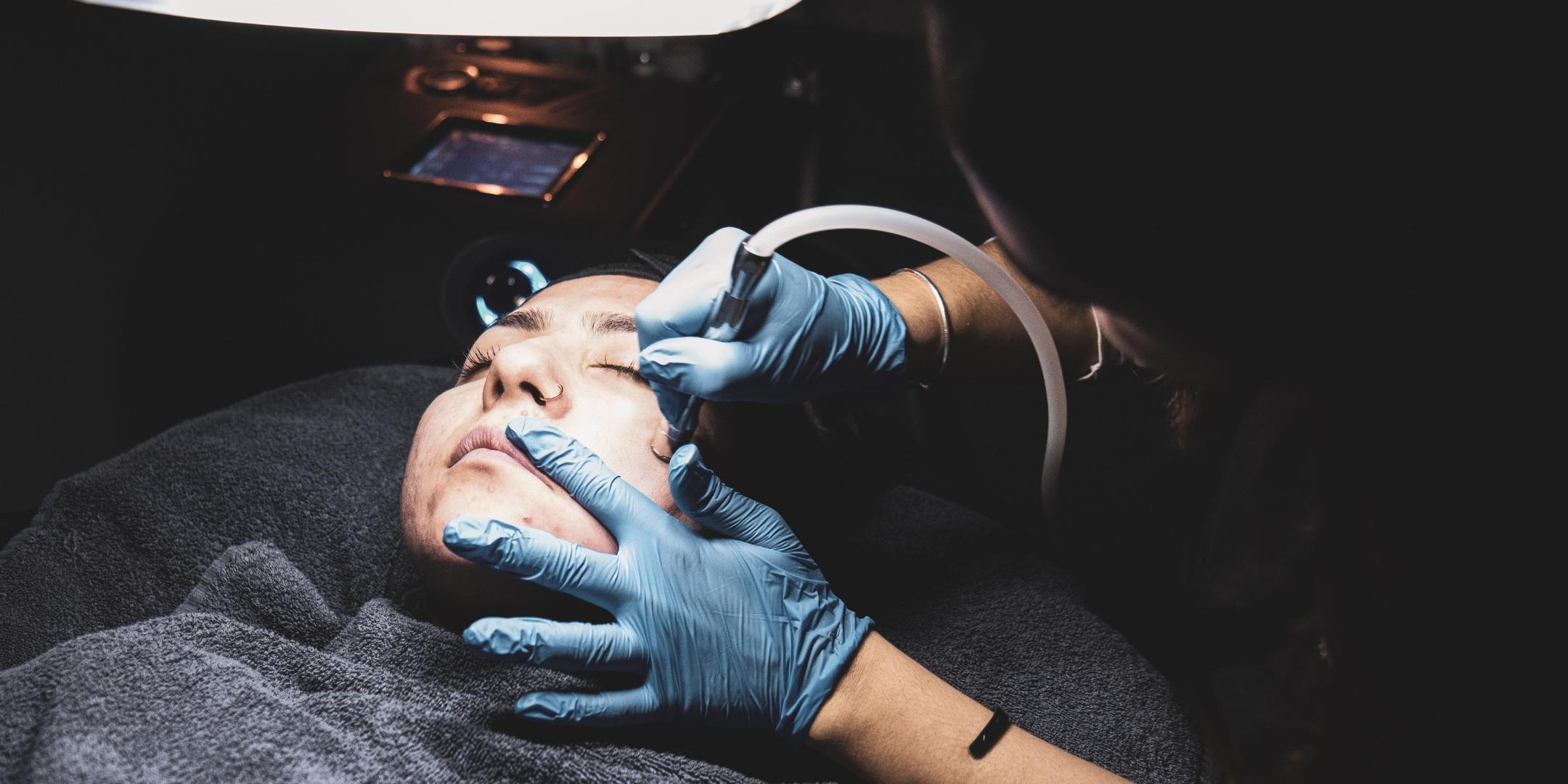The beauty world has embraced lasers, and many other refractive light treatments, to repair and tighten skin in lieu of surgery.
Recently, several of my friends underwent what they determined to be unsuccessful light and laser treatments. After hearing their stories and speaking with plastic surgeons, I decided to go for my own Intense Pulsed Light (IPL) session, and found that the most common misconception is that all light refracting treatments are “lasers”, when in fact they’re not.
Mislabeling treatments
Bad information communicated by untrained “professionals”, mislabeled online verbiage, and widespread general ignorance about techniques, procedures, and client necessity feeds this ongoing issue. Furthermore, the lasers used in the offices of plastic surgeons are expensive, potent machines, unlike many of those housed in medical spas or dental offices, which contributes to the incidence of practitioners providing ineffective treatments.
The technicians operating these devices need to be highly skilled professionals trained to recognize their client’s unique skin problems, knowing how to adjust the treatment strength and technique accordingly. Experienced medical professionals will check your skin type and any specific issues that you may have before executing the treatment they’ve determined is best for you.
What is laser skin resurfacing?
The term “laser” is actually an acronym for “light amplification by stimulated emission of radiation.” Medical laser devices produce high-energy, focused beams of intense, single-colored light and heat, which have been found to selectively interact with certain skin tissues. This can range from more gentle lasers like Clear and Brilliant, to more aggressive treatments like Fraxel.
The amount and distribution of energy in laser light is precisely delivered, increasing the success of treatments for many aesthetic conditions. In other words, when plastic surgeons use lasers, they target a single condition with one specific treatment.
According to the American Society of Plastic Surgeons, laser skin resurfacing can improve minor facial flaws, such as:
- Fine lines or wrinkles around or under your eyes, forehead or mouth
- Scars from acne or chickenpox
- Non-responsive skin after a facelift
- Aged or sun-damaged skin
- Liver spots
- Improve your complexion if you have yellowish or grayish skin tones
- Warts
- Birthmarks (such as linear epidermal nevi)
- Enlarged oil glands on the nose
What’s the difference between lasers and IPL?
“Technically speaking, these are all light and energy-based devices. However, a laser is a single wavelength of light,” explains board-certified plastic surgeon Dr. John Cook, who runs two practices in the Chicago area. “IPL, lasers, and other treatments are used to target specific conditions of the skin using different wavelengths and frequencies.”
Dr. Jacob D. Steiger, a board-certified facial plastic surgeon located in Boca Raton, FL says that his practice “performs several hundred laser procedures a year.” Steiger notes how he employs a variety of treatments to treat skin issues, among them deep carbon dioxide (CO2) lasers, fractional CO2 lasers, vascular lasers for rosacea such as the Excel V laser, and lasers for scars.
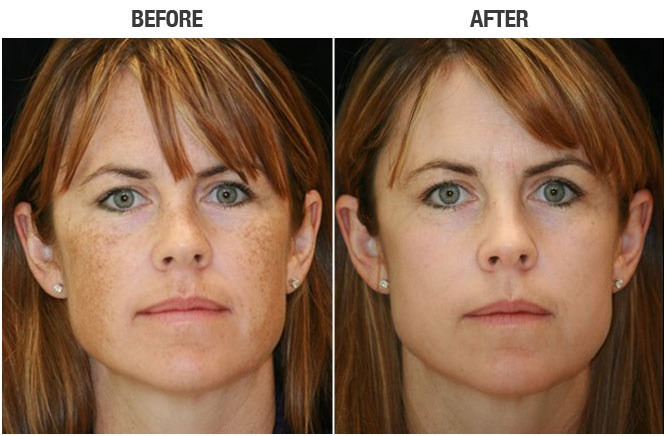
“Laser treatments are very effective, involve minimal discomfort, can be performed quickly, and most have minimal downtime,” says Steiger. “Patients can go home or back to work immediately following a laser treatment. Combining them with other procedures can lead to wonderful results. “
As new lasers and combined treatments become more popular, plastic surgeons like Cook have begun to stray from “old CO2 lasers that quite inelegantly blast off the entire surface of the skin.”
Nevertheless, Cook continues to be proud of his old work. “I still see patients I treated years ago and they look fabulous. But there were also downsides back then, things like pigment mismatching and the two to three weeks — or longer — downtime patients had to go through in order to recover.”
How does IPL work?
Intense pulsed light (IPL) is a technology used by cosmetic and medical practitioners to perform different skin treatments for aesthetic and therapeutic purposes like hair removal, photorejuvenation (e.g. the treatment of skin pigmentation, sun damage, and thread veins), and to alleviate dermatologic diseases.
IPL shares similarities with laser treatments in that they both use light to heat and destroy their targets. Unlike lasers that use a single wavelength (color) of light that can only treat one condition, IPL uses a broad spectrum. When specifically filtered, this enables it to treat several skin conditions.
The treatment uses a bright light with filters placed in front of it to censor out certain wavelengths not consumed by pigment and blood vessels. The light energy penetrates just below the skin’s surface, damaging either the melanin (skin pigment) or blood vessels.
The body’s natural skin repair mechanisms then remove the damaged tissue to produce a smoother skin appearance. It usually takes three to six treatments to see significant results and treatments can be spaced out every three to four weeks.
IPL is good for removing pigment, like age spots, and small blood vessels, such as telangiectasias. In some cases it can also help with fine lines by lifting and tightening the skin, but that’s never guaranteed. It has also been marketed for hair removal, although newer technologies seem to provide better results.
The advantage to IPL systems is that downtime is usually very minimal – although patients may experience a slight darkening of pigment before it eventually lightens.
My professional IPL experience
For my own treatment, I chose to visit Cook’s practice, where medical aesthetician Andrea Hochstedt first gave me a Visia Facial Assessment test and report. Measuring my texture, wrinkles, pores, red areas, porphyrins, UV spots, and brown spots was fascinating.
Let’s just say that my TruSkin age is a few years older than my actual age of 45, mostly due to many years of sun damage.
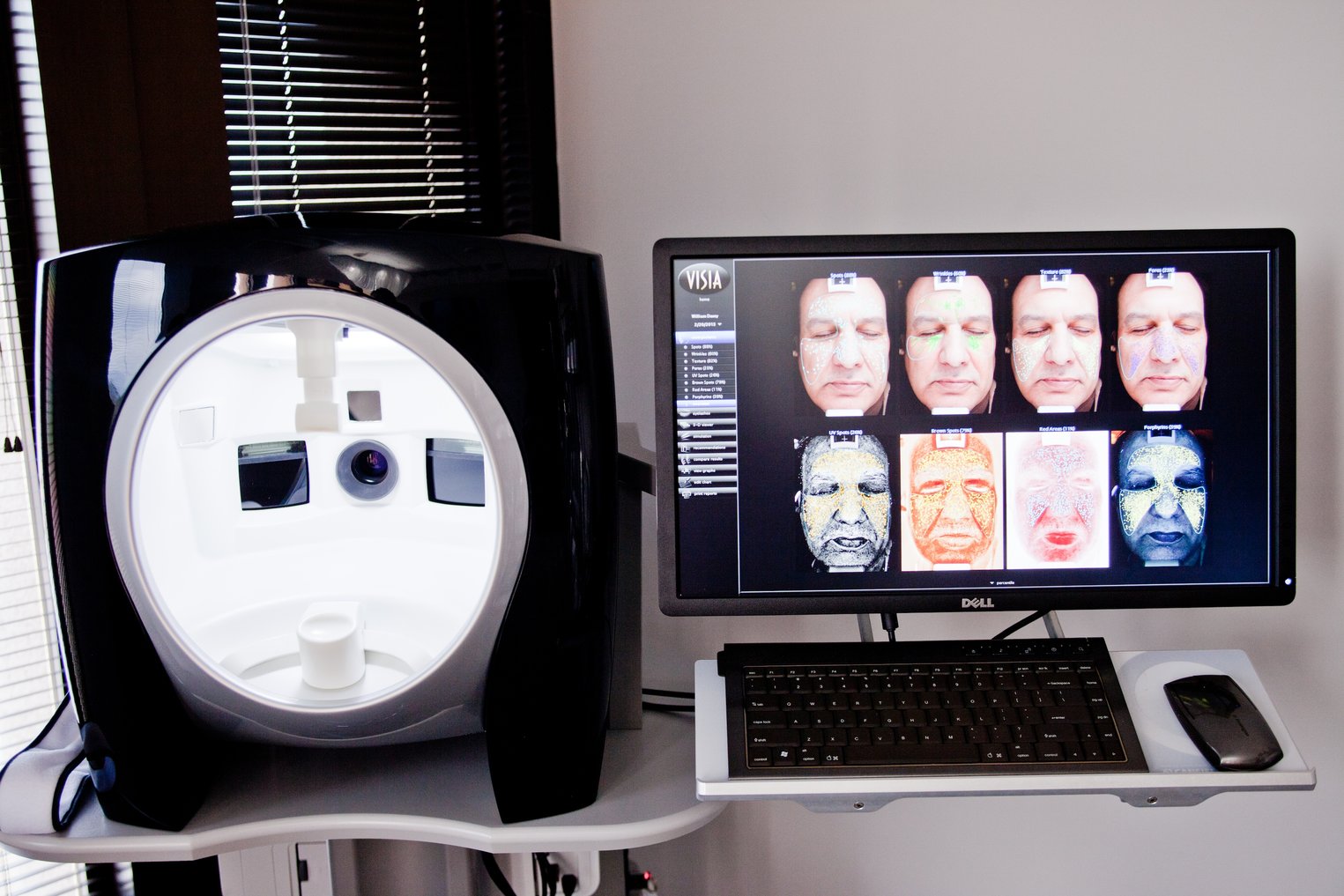
Hochstedt used a medical grade IPL instead of a laser to treat my red and brown spots because the refracted light device treats multiple color deficiencies. Cook’s machine of choice is the Palamar Icon, “the Ferrari of machines,” yet “something which requires a lot of judgment and skill to use properly.”
This became quite apparent once Hochstedt exuded her knowledge of wavelength and optic power to me, all stuff I have no ability to comprehend, let alone adequately convey here. It was like being in physics class as a kindergartner. Luckily, this is information that only the professionals need to know.
After rubbing numbing cream on my face, she began a process that felt somewhat intense around my more sensitive areas (nose, outer eye area). Otherwise, it just felt like being lightly sunburn.
Looking in the mirror afterwards, I was shocked to see myself as a red spotted leper. All of my freckles had darkened and surfaced from below my skin with red blotches surrounding them. Hochstedt suggested I get microdermabrasion and another IPL in four weeks time, with a total of four treatments per year.
People stared at me in stores as I ran errands afterwards. I can only imagine what they thought. Following instructions, I iced my face that evening and applied my regular moisturizer. To my surprise, upon awakening the next morning everything looked much better. There was no soreness and the red was gone, but the freckles had began to “pepper”.
Later that weekend, the ash-colored pepper flecks disappeared. Three days later, a birthmark that I had on my upper lip simply disappeared. Today, my skin looks close to flawless.
Why some treatments go wrong
Every person is different, and what works for 90% of the population may not work for the remaining 10%. Skin sensitivity, skincare products, pain tolerance, lifestyle habits such as sun exposure, smoking, drug use; all these factors affect a patient’s potential for successful skincare treatment.
I recently heard about a 30-something Los Angeles woman who purchased six sessions of laser hair removal treatments at a med spa in the Valley. The treatments were deeply discounted on Living Social, so she was more apt to experiment and try the full leg hair removal procedures.
Though the sessions slowed its growth, her leg hair was never fully removed. She later learned from one of the nurses that women on birth control may not find the treatments as effective as those who are not. Though frustrated with the results, she noted that if she found another discount offer, she would try the treatment once again.
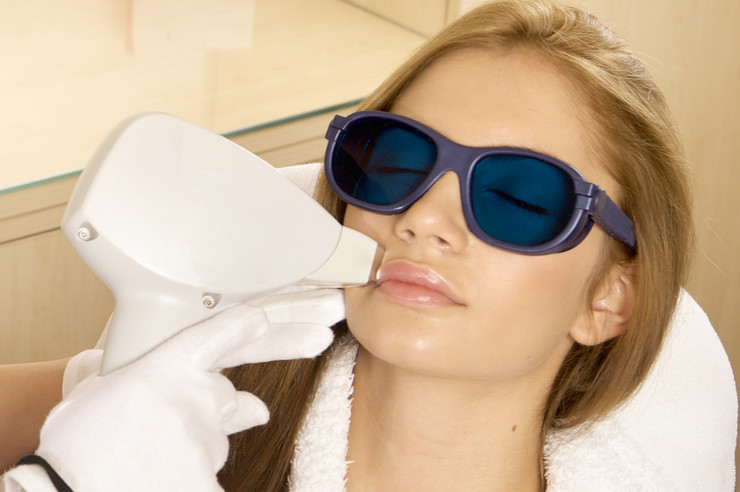
Similarly, I know of a 40-something Chicago woman who unsuccessfully tried various ointments and topical treatments to get rid of brown spots that were developing on her skin. She purchased a $1,000 laser treatment from a dermatologist to remove the spots. After 48 hours of her skin “burning” from the treatment, she was extremely disappointed to see no change whatsoever in the pigment she so desperately hoped would return to its original coloring. The experience turned her off from trusting professionals and trying any more laser treatments as a solution to her problem.
According to Hochstedt, some “practitioners don’t always understand the treatments they’re doing – which can put patients at risk.” At Cook’s practice, “he knows every treatment that every one of his patients has had in the past,” says Hochstedt. “Many med spas are not run this way. Sometimes doctors hang their certificates on the wall, but aren’t actually there to ensure that patients are receiving adequate treatments.”
At a professional plastic surgeon’s office there is always a nurse practitioner available if the doctor is in surgery. Clients may pay more but “don’t mind because they feel protected and safe,” notes Hochstedt. I know it made a difference with my own successful IPL experience.





